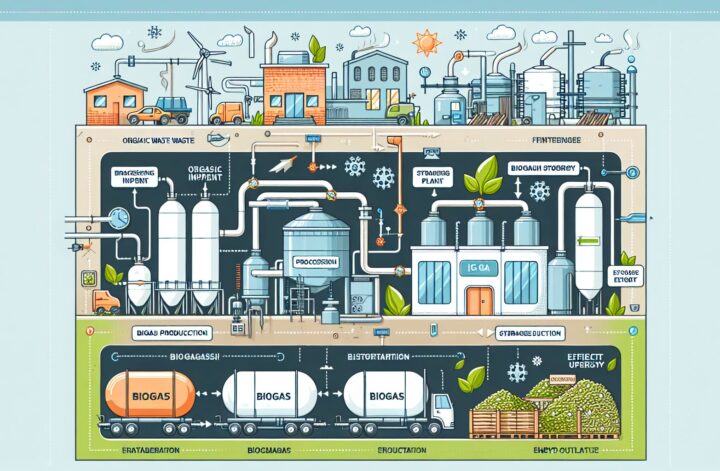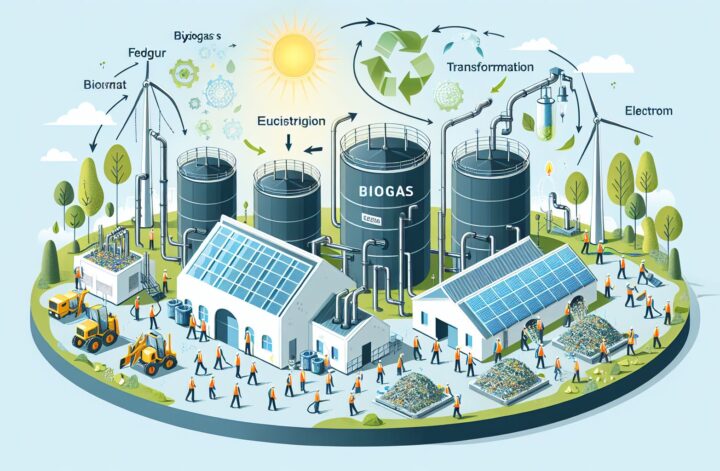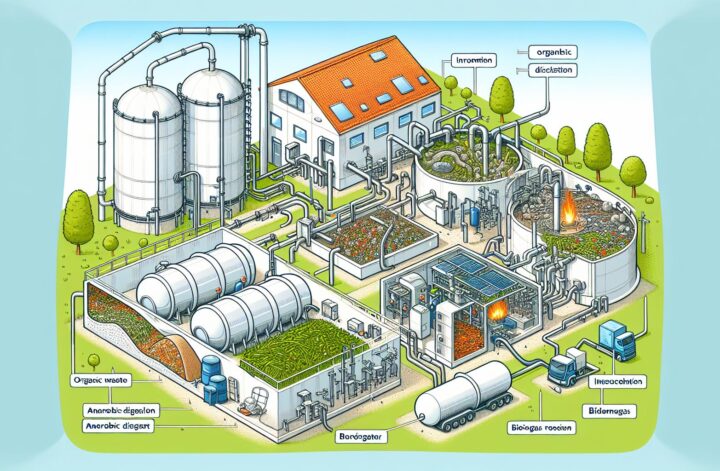The production of biogas has risen to prominence in recent years as a valuable source of renewable energy. Scientists, environmentalists, and politicians across the globe consider biogas as one solution in the fight against environmental degradation and climate change. This article will explore the multifaceted nature of biogas production, dissecting it from its inception to its final output as a clean, renewable energy source.
Biogas Production: A Biochemical Process
Biogas production harnesses the power of organic waste through a biochemical process known as anaerobic digestion. Anaerobic digestion comprises four stages: hydrolysis, acidogenesis, acetogenesis, and methanogenesis[^1^]. During these steps, organic matter, namely carbohydrates, fats, and proteins, is broken down in an environment devoid of oxygen, producing biogas and a by-product known as digestate[^2^].
In the initial stage of hydrolysis, large organic polymers are broken down into smaller molecules. Further breaking down during acidogenesis produces volatile fatty acids and other by-products. Acetogenesis transforms these by-products into acetate, carbon dioxide, and hydrogen. Methanogenesis, the final stage, uses all the products from the previous step and forms methane and carbon dioxide[^1^].
Aside from its renewable nature, biogas production has another key advantage. The solid residue or digestate can be used as a natural fertilizer due to its rich nutrient content, hence promoting a circular economic model[^3^].
Structure of the Anaerobic Digester
Tasked with the significant role of housing the biochemical reaction responsible for biogas production is the anaerobic digester. There are different means to calculate its size, largely dependent on parameters like the hydraulic retention time (HRT), solid retention time (SRT), and organic loading rate (OLR)[^2^]. HRT is the time spent by the sludge in the digester, while SRT refers to the period spent by microorganisms in the system. Balancing these helps improve digester performance and stability.
Another vital consideration in anaerobic digester design is the choice between two different temperature ranges of operation: mesophilic digestion and thermophilic digestion. Mesophilic digestion operates best at around 37°C, is less energy-intensive than its thermophilic counterpart, and is generally more stable[^2^].
On the other hand, thermophilic digestion operates at around 55°C. While it speeds up the digestion process and enhances gas yield, it is more prone to operational problems, including issues related to inhibition of anaerobic digestion such as ammonia toxicity and sulfide toxicity[^2^].
Enhancing Biogas Production
While anaerobic digestion’s main outputs are biogas and digestate, the produced gas needs further treatment or biogas upgrading. This includes desulfurization, drying, and the removal of carbon dioxide to enhance methane content, making it suitable for use in applications requiring high-calibre fuel[^1^].
Co-digestion is another method applied to improving biogas yield. This procedure involves the combined digestion of different substrates, with one acting as a ‘helper’ substance for another. This can reduce problems with nutrient deficiency and increase overall process efficiency[^2^].
Furthermore, recent research indicates that incorporating trace element supplementation within anaerobic digesters also augments the production of biogas. Trace elements serve as critical nutrients for methanogenic bacteria, thus spur their growth and activity[^4^].
In conclusion, biogas production is not just a mechanism for generating renewable energy, but a comprehensive cycle that embodies regenerated waste, greenhouse gas reduction, and energy production.
[^1^]: Li, Y., & Jin, Y. (2016) Biogas production and anaerobic digestion. In Anaerobic Digestion Processes (pp. 33-58). Singapore: Springer[^2^].
[^2^]: Appels, L., Baeyens, J., Degrève, J., & Dewil, R. (2008). Principles and potential of the anaerobic digestion of waste-activated sludge. Progress in Energy and Combustion Science, 34(6), 755-781.
[^3^]: Fantozzi, F., & Buratti, C. (2009). Biogas production from different substrates in an experimental Continuously Stirred Tank Reactor anaerobic digester. Bioresource Technology, 100(23), 5783-5789.
[^4^]: Demirel, B., & Scherer, P. (2008). The roles of acetotrophic and hydrogenotrophic methanogens during anaerobic conversion of biomass to methane: a review. Reviews in Environmental Science and Bio/Technology, 7(2), 173-190.




